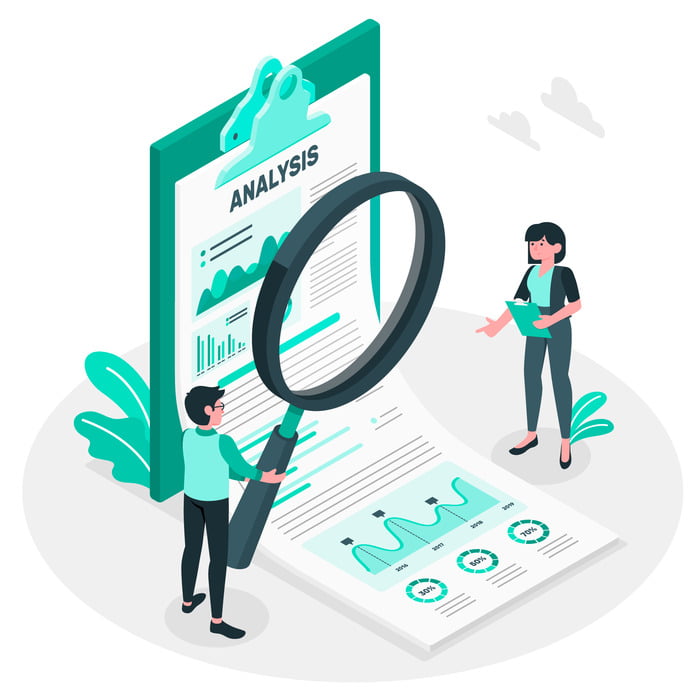The right KPIs are critical for optimizing IT management lifecycles. With the right set of metrics, organizations can objectively measure their IT function’s performance and identify areas for improvement. These service and operational KPIs often act as a compass, guiding IT teams to help drive operational excellence and achieve strategic alignment with organizational goals.
Let’s take a scenario where a telecom company is experiencing a high volume of customer service calls regarding connectivity issues, billing disputes, and service inquiries. When such calls are resolved on the first contact, customers are likely to be more satisfied and positively perceive the service. Conversely, every unresolved issue means extra follow-ups, an increased workload, and more resources required to handle these repetitive queries. It could lead to a spike in operational costs.
In this case, it’s easy to understand the importance of valuing First Call Resolution (FCR) as a key metric for IT success.
Read Article: Navigating the Path of AI-based Customer Helpdesk Software: Challenges, Benefits & Features
The true impact of KPIs on IT management
- Quantitative insight: KPIs offer tangible data, highlighting operational performance levels. This numerical information is crucial for objective analysis and assessment, clearly showing how well the ITOps are performing against set targets and expectations.
- Performance benchmarks: These benchmarks act as a baseline for identifying and alleviating inefficiencies. They provide a standard of excellence that helps measure ITOps practices, developing a culture of continuous improvement and operational excellence within the organization.
- Strategic decision support: Informed decision-making is facilitated through accurate KPIs, supporting strategic initiatives. The data from these KPIs serves as a roadmap for planning and implementing strategies aligned with the organization’s vision and objectives, ensuring a coherent approach to achieving business goals.
- Problem identification: KPIs highlight issues promptly, ensuring timely resolution. This immediate detection is pivotal for preventing small problems from escalating into major crises and maintaining the integrity and reliability of ITOps while safeguarding the organization’s reputation and customer satisfaction.
- Goal alignment: Aligning ITOps objectives with business goals is simplified with the right set of KPIs. This alignment ensures that the IT operations are not working in silos but are instead contributing positively to the attainment of broader organizational objectives.
Related blog: Top Metrics to Monitor for AWS (ELB) Elastic Load Balancing
Seven IT-based KPIs to consider in 2023
In the fast-evolving IT management world, yesterday’s metrics might not hold relevance today. It’s crucial to select KPIs that align with your business goals and are adaptable to the changing dynamics of the IT environment. The right KPIs should offer actionable insights, driving continuous IT improvement and innovation. Some of the deciding factors should include:
- Relevance: Make sure KPIs are in sync with business and operational goals.
- Measurability: Opt for indicators providing quantifiable and tangible data.
- Actionability: The insights derived should be actionable, guiding improvements.
- Consistency: Consistency in KPIs ensures accurate tracking and trend identification.
- Simplicity: KPIs need to be easily understandable for all team members.
Now, let’s check out the right KPIs to consider in 2023.
1) Agent Productivity
This KPI measures the number of tickets an agent resolves within a given timeframe. High productivity indicates a methodical use of time and resources, which ends up improving service delivery and customer satisfaction.
2) First Contact Resolution (FCR)
FCR tracks the percentage of issues resolved during the initial interaction with the customer. It is crucial for enhancing customer satisfaction, as clients prefer their issues to be resolved quickly without being escalated.
3) Customer Satisfaction Score (CSAT)

After resolving a ticket, customers are asked to rate their satisfaction with the service received. Direct customer feedback is vital for understanding the end-user’s perception and experience and guiding improvement efforts.
4) Average Handling Time (AHT)
AHT measures an agent’s average time to resolve a ticket, from initiation to closure. Systematic handling time is crucial for managing workloads and delivering timely services without compromising quality.
5) Agent Utilization Rate
This KPI measures the percentage of time an agent actively works on tickets compared to their total available time. Understanding agent workload helps allocate resources, prevent burnout, and maintain consistent service quality.
6) Ticket Escalation Rate
It calculates the percentage of tickets that are escalated to higher support levels or specialists. A low escalation rate indicates that agents are well-equipped to handle most issues, minimizing delays and improving the customer experience.
7) Knowledge Base Usage
It tracks how often agents refer to or contribute to the organization’s knowledge base while resolving tickets. Active usage and contribution to the knowledge base demonstrate continuous learning and collaboration among agents, leading to better problem-solving and service delivery.
The ripple effect of agent productivity on customer experience
Ask any IT manager or CTO; they would be the first to say that a productive agent is a cornerstone of exemplary customer service. When agents resolve issues seamlessly, customers enjoy a seamless service experience that creates loyalty and builds trust. In an era where customer expectations are sky-high, agent productivity is more than a metric; it’s a commitment to service excellence. So, let’s look at three ways that can help maximize the impact of agent productivity on customer experience.

- Customer satisfaction surveys: High satisfaction scores and favorable feedback often mirror the performance of agents. Analyze and present this data to showcase how improvements in agent productivity lead to higher customer satisfaction and loyalty.
- Case studies: Illustrate specific scenarios where agent performance, quick problem resolution, or proactive service delivery led to positive customer testimonials, repeat business, or increased customer lifetime value. These real-life examples provide tangible evidence of agent productivity’s impact on the customer experience.
- Customer retention and churn rates: A decrease in churn rates and an increase in customer retention often signify enhanced customer service and support, primarily delivered by productive agents. By comparing these rates over time and correlating them with agent performance data, you can convincingly demonstrate the positive ripple effect of agent productivity on customer experience and loyalty.
Related blog: Everything You Should Know About Collaborative Work Management In 2023
Conclusion
Incorporating the right KPIs is non-negotiable in environments that thrive on IT success. However, it’s also crucial to regularly monitor and analyze performance data based on these KPIs to identify and resolve issues promptly. Based on data-derived insights, IT teams and leaders can make informed operational and service changes.
Of course, feedback integration must also be given due importance. Stakeholder feedback is invaluable in refining and enhancing IT operations and helps cultivate a learning culture among team members for perpetual improvement.
But, at the end of the day, thoughtfully chosen and implemented IT management KPIs can drive IT operational success. Armed with the right KPIs, organizations can navigate through the complexities of the IT landscape, ensuring success in the long run.























